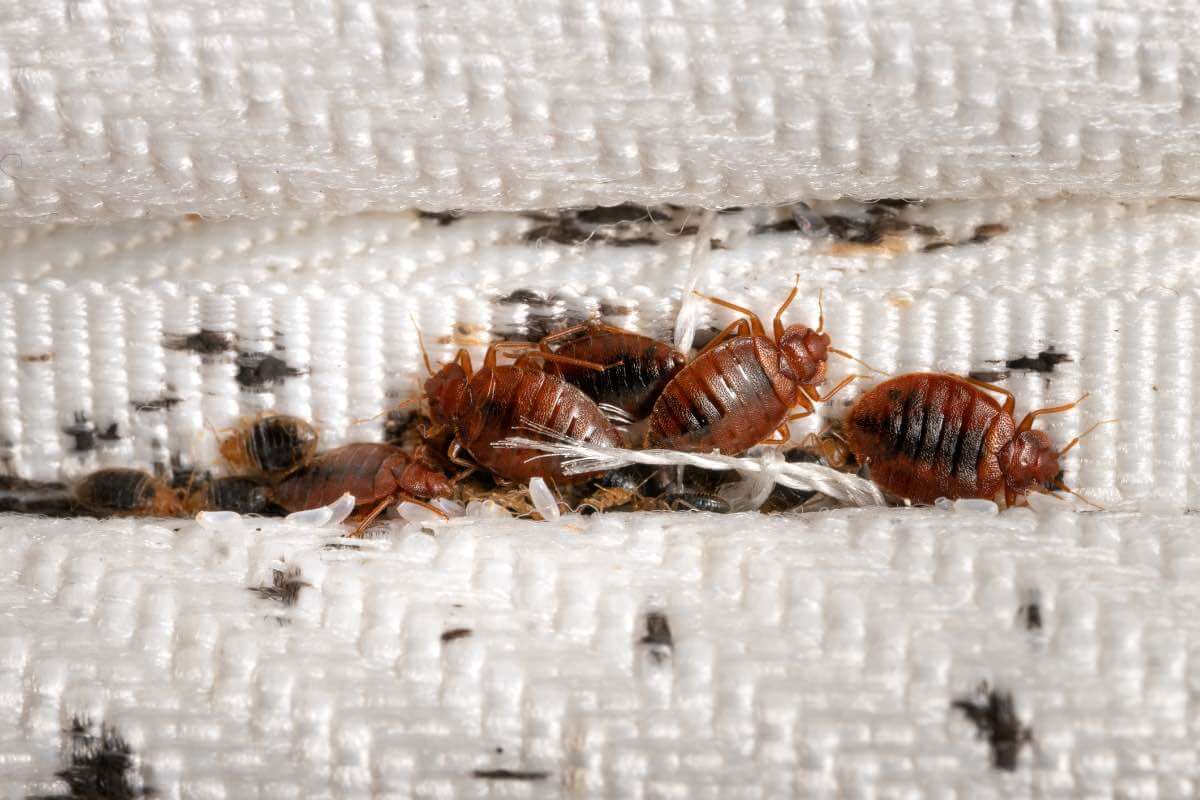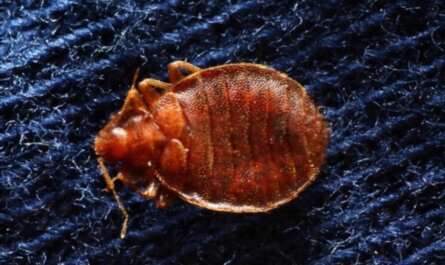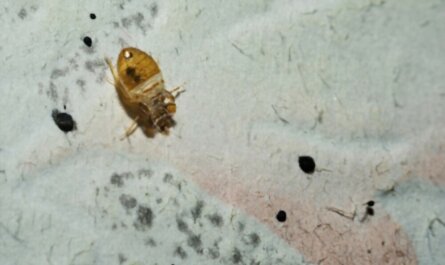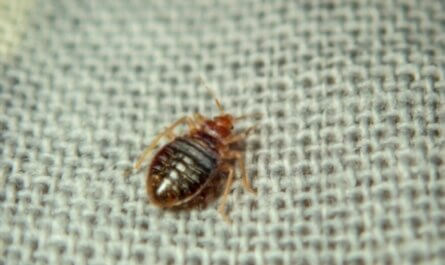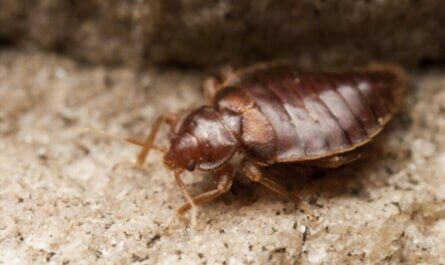Where Do Bed Bugs Come From?
Bed bugs are an increasingly common household problem that can be found in many different places, and understanding how they migrate is essential to preventing infestations.
Common hiding places
Bed bugs are masterful hiders that can be found in a variety of places around the home. They prefer to stay close to their source of food, which is usually humans or their pets. In order to find them, it’s important to understand common spots where they may hide.
These include mattress seams and tags, wooden video game consoles or phones, edges of carpeting and area rugs, behind wall outlets and light switches, inside bed frames and box springs (especially if wood),
Between cushions on couches/chairs/recliners/loveseats, inside clothing pockets (check your coats before bringing them back into your residence!), under nightstands and other furniture adjacent to the bed such as dressers or desks.
Bed bugs also love upholstered furniture; look for dry rot along fabric seams in couches or chairs – bedbugs like these areas too! Finally check any other dark crevices throughout the room– behind pictures on walls can also provide shelter for this insect.
How they are transported
Bed bugs can be easily spread through the transportation of items such as furniture, bedding, luggage, and other personal belongings. Using contaminated pieces of furniture or secondhand beds is an especially common cause of bed bug infestation.
They are also known to be carried into buildings on clothing or suitcases. In order to reduce the risk of bringing in a new infestation, it is important to inspect all second-hand items before bringing them into the home and to take precautions when traveling.
When you stay in a hotel or other shared space, check for signs of an infestation around any beds you will use – paying special attention to mattresses and sheets – by using a bright flashlight and running your hands along seams where possible.
If shopping for used furnishings has been necessary at any time during your vacation period do not hesitate to wash any clothes immediately upon returning home with hot water and drying where applicable after doing so until the heat reaches 140 degrees Fahrenheit (for about 20 minutes).
Finally vacuum thoroughly each time you return from travel since this action helps eliminate any eggs that may have been picked up while away from home.
Sources of infestation
Bed bugs are notorious hitchhikers that can travel with people from place to place and are often transported into homes or buildings inside items such as luggage, clothing, furniture, and boxes.
Common hiding places for bed bugs include mattresses, headboards mounted on walls (especially the back side), furniture crevices, tiny cracks in the wall or flooring, edges of carpets or rugs, behind wallpaper and picture frames, between curtains or draperies.
As bed bugs reproduce rapidly when their population is left unchecked; a single infestation can quickly spread to other interconnecting rooms or even between units in multi-unit dwellings.
In addition to this traditional option of transportation within one’s environment; studies have also revealed an increase in travel-related bed bug infestations due to heightened mobility around the world during the past two decades.
Further factors contributing to bed bug populations may be linked with changes in pest control practices (such as an increased use of insecticides) and reported cases of insecticide resistance by certain species.
How to Check for Bed Bugs
Carefully inspect your home or room for signs of infestation, using a flashlight and moving furniture away from walls.
Looking for signs of infestation
From small rusty-looking stains on bedding, mattresses, and furniture to dark spots on literally any nearby surface, check for these telltale signs of a bed bug infestation:
- Rusty or reddish stains on the surfaces around sleeping areas that are caused by bed bugs being crushed during nighttime activity
- Small black dots where adult bed bugs have been excreting digested blood
- Live eggs, larvae, or adult bed bugs visible near the seams and crevices of mattress
- Shed skins from new and mature bed bugs that can range in color from almost clear white to dark brown
- Musty odor that comes from the pheromone secretions of bed bug populations as they rapidly multiply in an area
- Blood spots left behind after a person has rolled over onto a group of feedings or scared off an active population while sleeping
Using a flashlight to search for bugs
Flashlights can be an effective method for searching for bed bugs. When looking for signs of infestation, one should spend time checking not only the mattress and box spring but also other sections of the bed such as cracks in the headboard and bedframe.
A flashlight can help pinpoint dark spots or rusty or reddish stains which may indicate an issue. Additionally, while bed bugs do not usually glow under ultraviolet light like scorpions and other insects do, using UV light as a supportive tool during inspections may still help ensure that they are removed from a space.
Therefore it is important to combine the use of flashlight with preventive measures such as regular cleaning and vacuuming to effectively deal with any potential bed bug infestations before it gets out of control.
Steps to Take If You Find Bed Bugs
Once you’ve identified an infestation, it’s important to take the necessary steps to ensure that bed bugs don’t continue spreading and causing further damage.
These steps include contacting a pest control professional, cleaning and treating affected areas of your home or building, as well as washing and drying all items that may have been infested.
Contact a pest control professional
When dealing with a bed bug infestation, it is important to contact a professional pest control specialist. Although they may be expensive, the benefits of professional treatment far out-weigh any potential risks associated with DIY methods.
Pest control professionals have the necessary expertise and knowledge in insecticide spraying as well as effective management and monitoring of an infested area. It is especially important for healthcare facilities or people living in urban areas to consult a professional when dealing with bed bugs, due to allergies or sensitivities that might be exacerbated by exposure to bugs.
With their help and guidance, homeowners can gain proper handling of infested items from your home while controlling the problem at once! There’s no doubt about it – if you suspect there are bed bugs present in your home, it’s best not to hesitate and call up an expert immediately before further harm is done.
Clean and treat affected areas
Cleaning and treating areas affected by bed bugs is the most important step in eradicating an infestation. Simple cleaning practices can help reduce current populations, while proper treatment will eliminate remaining ones.
Wash and dry infested items
It is essential to get rid of bed bugs as soon as possible, and one way to do this is through washing and drying infested items. Washing items in hot water and using a hotter temperature dryer for at least 30 minutes can kill the bugs.
Laundering material will help remove any dirt, feces, eggs or live insects that may be present on household fabrics. Heat is generally considered the most effective method out there when it comes to killing bed bugs quickly and efficiently.
Exterminators often use dry steam cleaning for treating rooms or furniture that have become infested with these pests.
- Use hot water (120°F) – higher temperatures are ideal but must not exceed 140°F since they could damage the fabric item being washed
- Wash all sheets, pillowcases, blankets, bed skirts in hot water
- Dry on high heat (at least 120º F) for at least 30 minutes
- Soak all washable items like stuffed animals and clothing that cannot be machine-washed in hot soapy water then air-dry them in direct sunlight if possible; vacuum carpets after rolling up any rugs
- Mattress covers can help prevent re – infestation; box spring protection should also be used if needed
- Regularly clean your home by vacuuming floors surfaces including behind headboards beds frames which may potentially contain hidden bedbug eggs
How to Prevent Bed Bugs
Careful inspection of hotel rooms when traveling, avoiding used furniture without thorough inspection, taking precautions when staying in shared spaces and cleaning and vacuuming your home regularly are effective methods of preventing bed bug infestations.
Inspect hotel rooms when traveling
Traveling is a wonderful way to explore different parts of the world, develop new experiences and create lasting memories.
However, no one wants to bring bed bugs home from their travels. To prevent this unwelcome guest from invading your home, it’s important to learn how to inspect hotel rooms for bed bugs when travelling.
- Check common hiding places such as beds & headboards, carpets & rugs and sofas/chairs for evidence of stains or castings (exoskeletons) that indicate bed bug presence.
- Use a flashlight while checking mattresses and wall cracks for signs of an infestation – insects themselves may also be visible if present in sufficient numbers casting shadows on the surface behind them when lighted up against a bright wall or lampshade.
- Set your luggage away from any furniture element inside the hotel room like dressers or chairs – use portable racks where available instead of placing suitcase directly on floor which can facilitate spreading further into other areas during stay there overnight unless thoroughly inspected&treated somehow with pesticide beforehand just in case already too late then by that time unfortunately…!
Avoid buying used furniture without thorough inspection
When considering purchasing used furniture it is important to remember to inspect the item yourself. With second-hand furniture, bed bugs may be present and can pose a serious difficulty once they infest not only the furniture, but also your home.
They tend to hide in crevices or cracks so that means you must closely check for any signs of them. When inspecting the furniture, use specialized tools like credit cards and gloved fingers to search these small areas for eggs or other remains.
Bedbugs detect body heat which suggests turning off all lights before performing your inspection as this will make their presence easier to detect best with a flashlight instead.
If possible ask the seller if there have been any previous issues with bed bugs resulting from this exact piece as well – this might help give insight into potential existing infestation risks within the piece of furniture purchased! It is important also take necessary precautions such as regularly washing all clothes and vacuuming carpets surrounding the area where the item was placed –
Even after relocation on a temporary basis could potentially threaten an entire house stronghold and hardship lasting months worth of pest control treatments including insecticides and cleansing processes too costly in many cases when adequate caution was exercised prior purchase/condition inspection by buyer beforehand.
Take precautions when staying in shared spaces
It is important to take preventive measures when using shared accommodations or staying in places frequented by other people. This can help reduce the risk of bringing home bed bugs and other parasites from these environments.
Prior to entering your space, inspect all beds for signs of infestation such as dark spots on sheets or mattress seams, eggs, droppings, discarded shells or live bed bugs.
Regularly clean and vacuum your home
This is an important step in preventing bed bugs and should be done on a regular basis. To effectively clean and vacuum your home, begin by vacuuming all rugs, floors, upholstered furniture, bed frames, and any other cracks and crevices throughout the rooms.
In addition to vacuuming, dusting, sanitizing, and disinfecting are also necessary steps in order to completely eradicate bed bug infestations. It is also important to treat affected areas with pesticides if needed. Bed bug traps can also be used as an extra measure of prevention.

